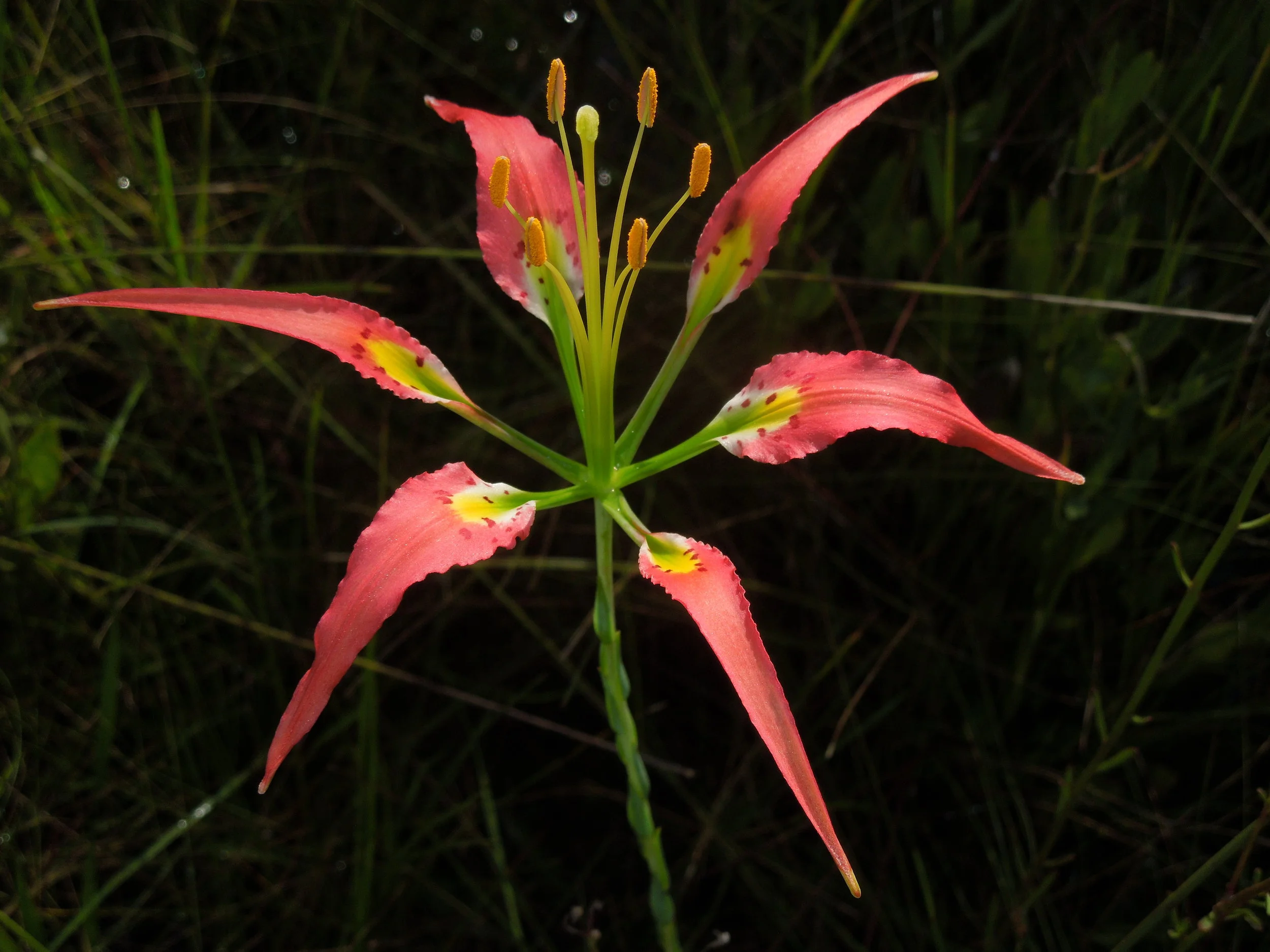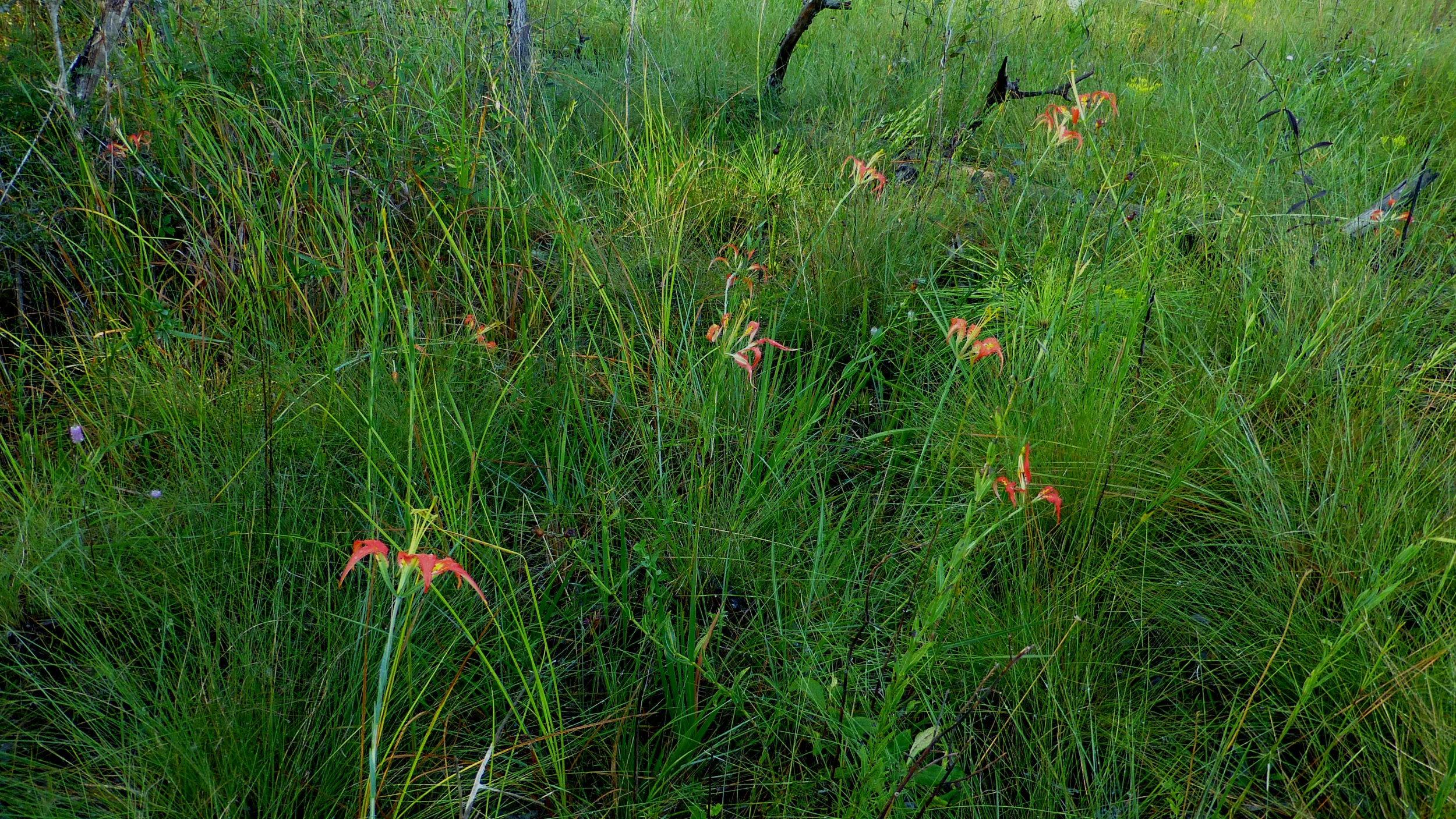The pine lily (Lilium catesbaei) is one of North America’s finest species of lily. It produces the largest flowers of the genus on this continent and to see one in person is a breathtaking experience. The pine lily is endemic to the Southeastern Coastal Plain where it prefers to grow in mesic to wet flatwoods, wet prairies, and savannas. Though it enjoys a relatively wide distribution, today it rarely occurs in any abundance.
The pine lily’s rarity may be a relatively recent status change for this wonderful plant. Historical records indicate that it was once quite abundant in states like Florida. Today it occurs in scattered localities and predicting its presence from year to year has been a bit tricky. Indeed, the pine lily appears to be very picky when it comes to growing and flowering.
One aspect of its biology that might lend to its limited appearance is the fact that it can remain underground in a dormant state for years. Like other members of this genus, the pine lily emerges from a bulb. This underground storage structure is small by lily standards, which means that most pine lilies are operating on marginal stores of energy in any given year.
Some have estimated that individual bulbs can remain dormant for upwards of 5 years before the right conditions for growth flowering present themselves. Of course, such dormancy can be a nightmare for proper conservation of such a unique plant. Aside from the individual flower borne at the tip of a long, slender stem, the rest of the plant is very dainty. In fact, its flowers can be so heavy compared to the rest of the plant that some stems simply topple to the ground before they can set seed. The slender stem, small leaves, and tiny bulb equate to a small operating budget in terms of energy stores. That being said, we are starting to get a clearer picture of what pine lilies need to thrive and it all comes down to fire.
Photo by Eleanor licensed by CC BY-NC 2.0
The key to acquiring enough energy for growth and reproduction appears to be a proper amount of sunlight. Without it, plants languish. This is where fire comes in. The pine lily lives in a region of North America that historically would have burned with some frequency. Wildfires sweep through an area, burning away competing vegetation like saw palmetto (Serenoa repens) and clearing the ground of accumulated debris like sticks and leaves. By burning away the competition, fire creates open areas where delicate plants like the pine lily can eke out an existence. Indeed, research has shown that pine lilies produce more flowers and seed immediately following ground-clearing burn followed by a subsequent decline in flowering and seed set as the surrounding vegetation begins to grow back.
If a pine lily does have enough energy to flower, then one of the most stunning flowers in all of North America is presented with its face towards the sky. Its 6 large petals are brightly colored and taper down into what looks like tiny tubes. Nectar is produced within these tubes and, coupled with the bright coloration, attract numerous insect visitors.
Not all insects are capable of successfully pollinating such a large flower. In fact, it would appear that only a couple of species take up the bulk of the pollination of this incredible plant. As far as we know, the Palamede swallowtail butterfly (Papilio palamedes) and perhaps the spicebush swallowtail (P. troilus) are the only species large enough to properly contact both anthers and stigma while feeding at the flowers. The large wingspan of these butterflies do all of the work in picking up and depositing pollen. All other insects are simply too small to adequately achieve such feats.
Though we still have a lot more to learn about the pine lily, what we do know tells us a story that is repeated for fire-dependent ecosystems throughout the world. Without regular disturbance from fire, biodiversity drops. The pine lily is not alone in this either. Its fate is intertwined with countless other unique plant species that call the coastal plains their home.
Photo Credits: [2]





